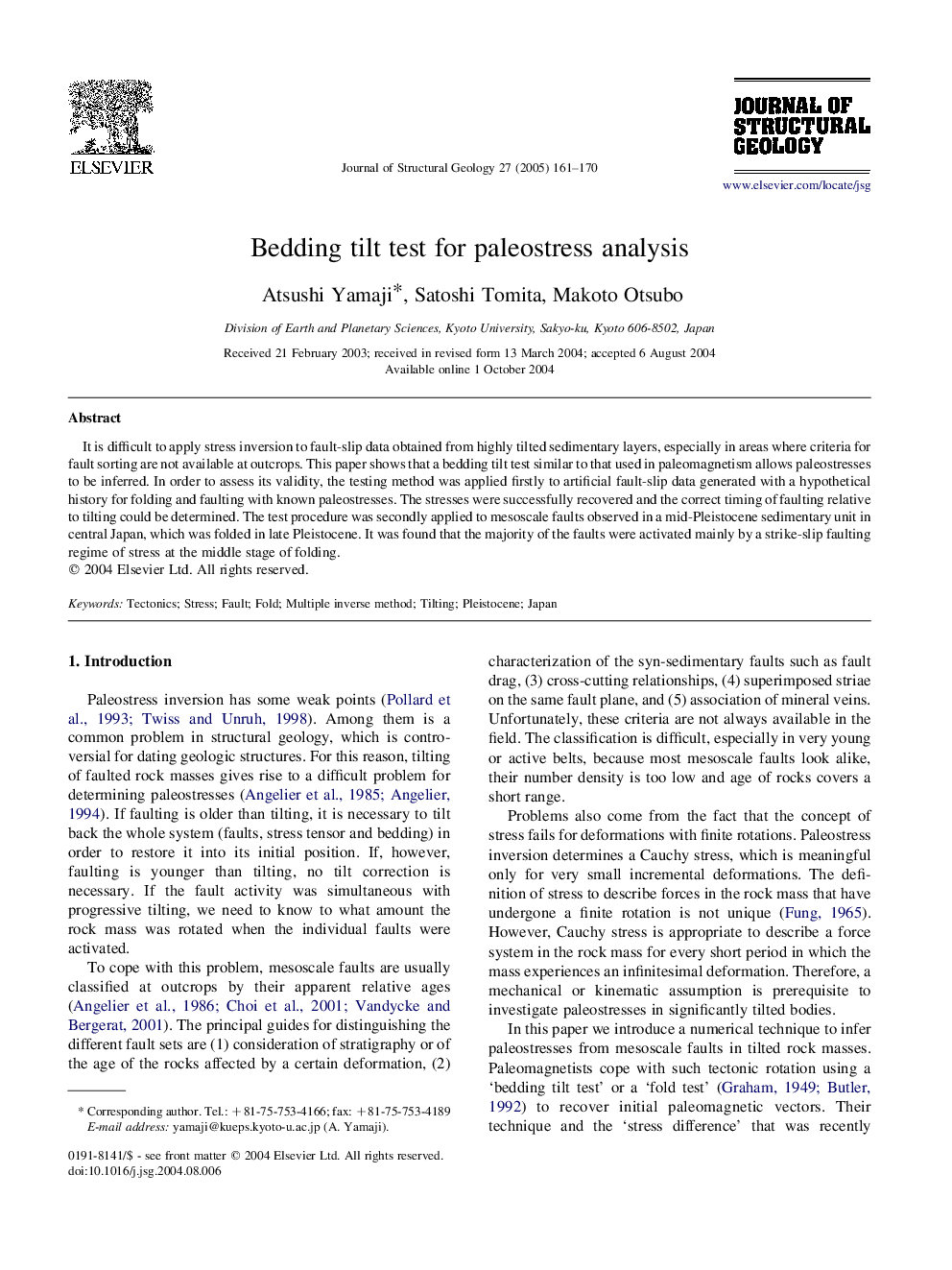| Article ID | Journal | Published Year | Pages | File Type |
|---|---|---|---|---|
| 9536152 | Journal of Structural Geology | 2005 | 10 Pages |
Abstract
It is difficult to apply stress inversion to fault-slip data obtained from highly tilted sedimentary layers, especially in areas where criteria for fault sorting are not available at outcrops. This paper shows that a bedding tilt test similar to that used in paleomagnetism allows paleostresses to be inferred. In order to assess its validity, the testing method was applied firstly to artificial fault-slip data generated with a hypothetical history for folding and faulting with known paleostresses. The stresses were successfully recovered and the correct timing of faulting relative to tilting could be determined. The test procedure was secondly applied to mesoscale faults observed in a mid-Pleistocene sedimentary unit in central Japan, which was folded in late Pleistocene. It was found that the majority of the faults were activated mainly by a strike-slip faulting regime of stress at the middle stage of folding.
Related Topics
Physical Sciences and Engineering
Earth and Planetary Sciences
Geology
Authors
Atsushi Yamaji, Satoshi Tomita, Makoto Otsubo,
